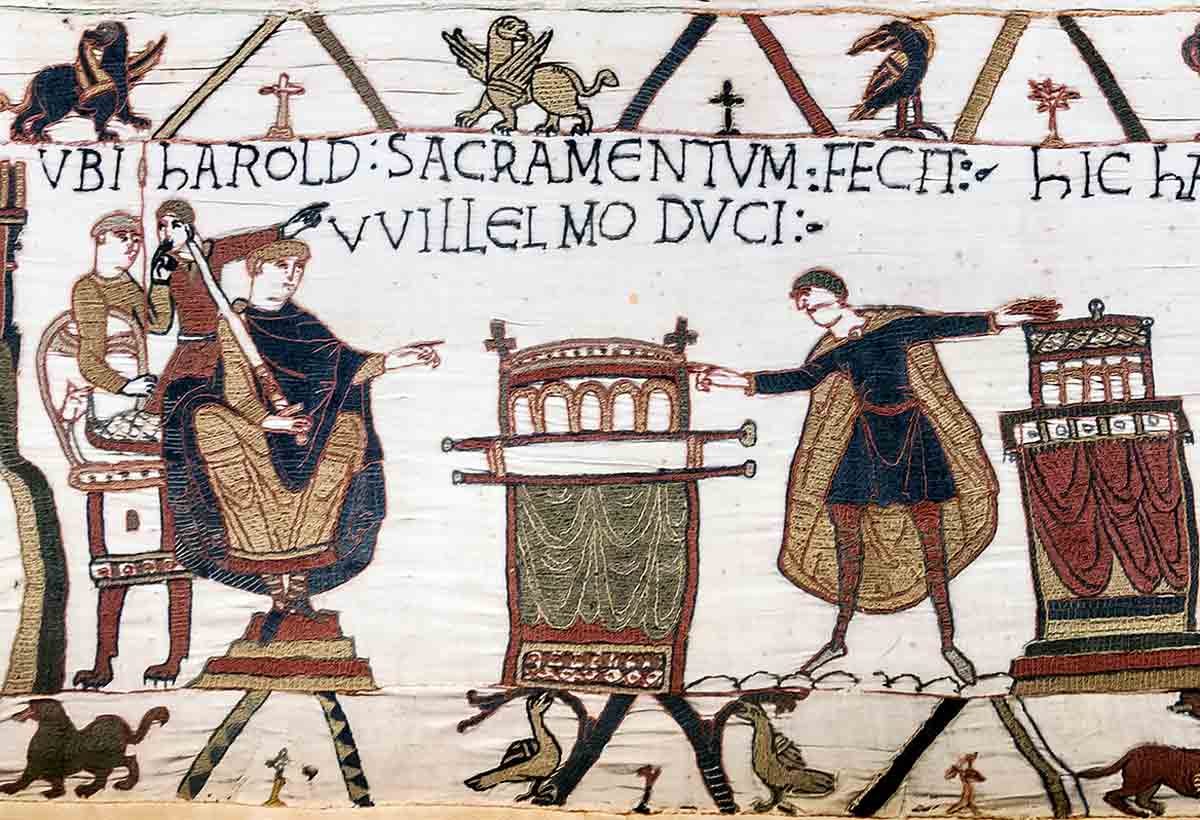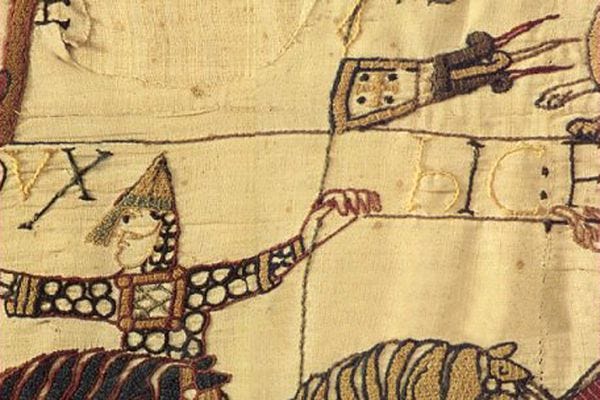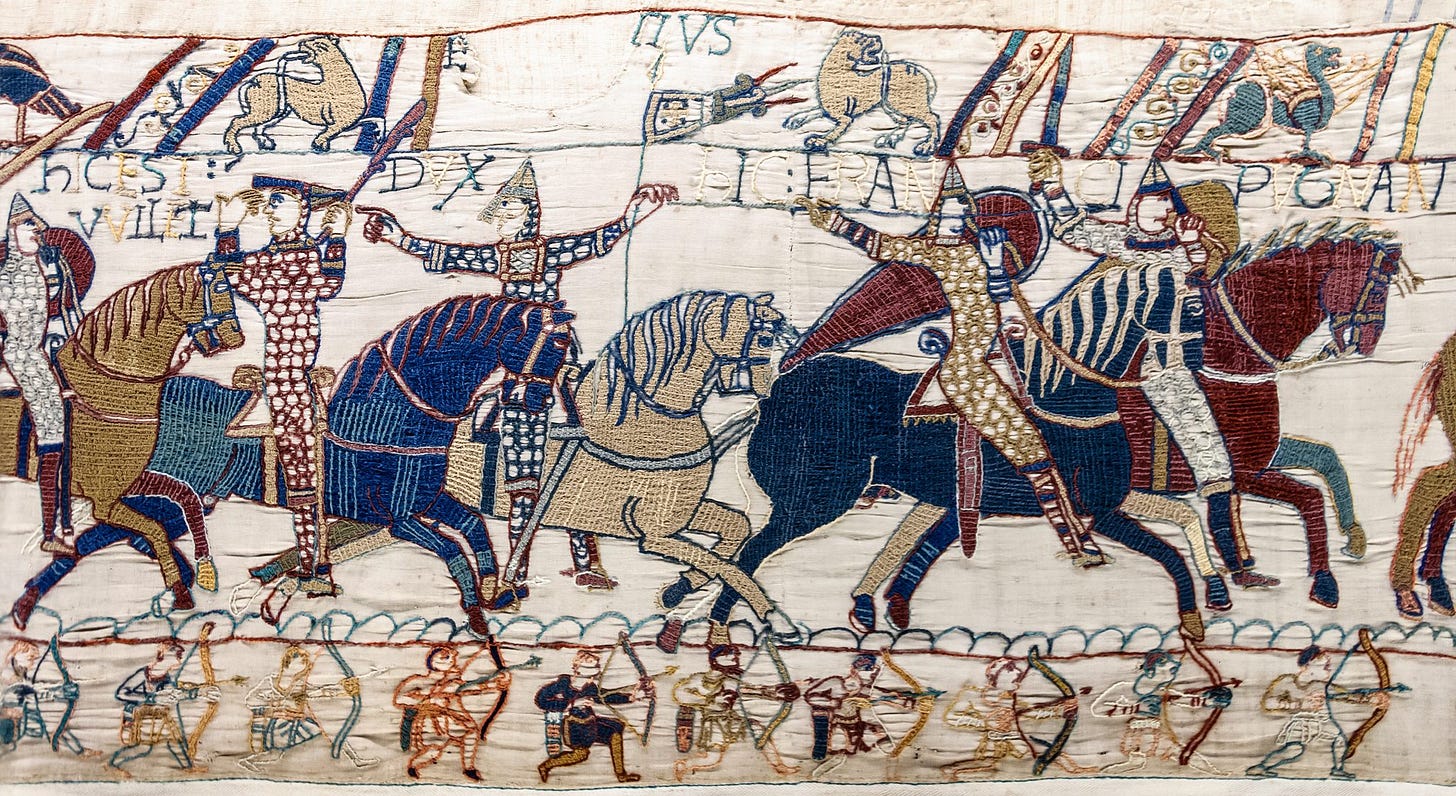The Rightful King: William the Conqueror
Norman influence in Anglo-Saxon England and the historical context in favour of William the Conqueror's claim to the Kingdom of England.
Edward the Confessor (c.1003-1066) was the last king of the House of Wessex, founded in the 6th century by the Anglo-Saxon king, Cerdic. Interestingly, Edward's father was Æþelræd unræd (“the unready”) and Emma of Normandy, daughter of Ricard le Fers (Richard “the Fearless”), making her a descendant of Rollo, the Duke of Normandy and well-known famous viking warrior.
Edward the Confessor's ancestry and relationship with Normandy was significant because it tied into the events preluding the Battle of Hastings in 1066, when the Normans conquered England. Prior to the year 1066, the Normans already had cultural and social influence in England that remains largely ignored by Anglo-Saxon enthusiasts online. Notably, Edward the Confessor was brought up in Normandy and had invited professional Norman architects to England to build Westminster Abbey in 1042. In 1051, Edward also invited Norman knights to come to England to establish motte-and-bailey castles as defence against the Welsh.
Another significant note is that William the Conqueror was Edward the Confessor's second cousin. Harold Godwinson, on the other hand, was part of the Anglo-Saxon nobility but did not have a connection to the ruling English royal family in the same way that William of Normandy did. In Gesta Guillemi, William of Poitiers notes that Edward the Confessor promised William the Conqueror the English throne due to their blood connection through Emma, Edward the Confessor’s mother, who was William's great aunt. William of Jumièges backs this claim in Deeds of the Dukes of the Normans.
Moreover, in Gesta Guillemi, William of Poitiers writes that Harold Godwinson swore an oath to William the Conqueror in 1064, supporting his succession to the English throne as promised by Edward the Confessor. This event is depicted on the Bayeux Tapestry, which shows Godwinson placing his hand on holy relics in front of William. According to Orderic Vitalis in Ecclesiastical History, Godwinson's coronation was a violation of his oath, justifying William's invasion and making Harold Godwinson an oath-breaker:
“Harold himself had taken an oath of fealty to Duke William at Rouen in the presence of the Norman nobles, and after becoming his man had sworn on the most sacred relics to carry out all that was required of him. After that, the Duke had taken Harold on an expedition against Conan, Count of Brittany, and had given him splendid arms and horses and heaped other tokens upon him and his companions.”

Oaths in pre-Christian Germanic society:
While the 11th-century Normans and Anglo-Saxons were Christians, it is worth looking at the pre-Christian worldview of their ancestors, the north sea Germanic Pagan peoples. Both the Normans and Anglo-Saxons nominally shared the same ancestors; the Normans were descendants of Scandinavian viking settlers in Normandy. The Anglo-Saxons were descendants of the Angles and Saxons, with the addition of the Jutes that settled in England. All of these peoples were, at one point, “Pagans”, which is a broad umbrella term typically used to refer to a large body of ancient peoples that followed the traditional indigenous European religions and worshipped a variety of Gods.
Ancient Pagans viewed our world and the other realms as being intrinsically connected with one another, and the veil between our world and the others was viewed as (and therefore is) translucent. Regarding oaths, Málrúnar (“Speech Runes”) has been employed historically in a pre-Christian Scandinavian context whereby an oath spoken wrongly or deceitfully could have had severe consequences. An oath taker may deliberately swear to something that was technically true but morally dubious as seen in the Víga-Glúms Saga in which Glum swore that he had not killed Thorvald Hook when in fact he did. Glum took “a temple oath on the ring and I deny to the god that I was not there and did not strike there and did not redden point or edge where Thorvald Hook met his death.” Glum’s oath and the manner in which he says “I was at that place” ("ek vark at a þar") and “I was not there” ("ek varkat þar") sound identical and can therefore be seen as an example of someone using Speech Runes to deceive others in an oath-swearing context.
It is unknown as to whether using Speech Runes and other verbal tricks in an oath-binding context was historically acceptable or not, but it was soon pointed out that Glum had in fact admitted to the killings, “in the most unusual words” and that it was also disgraceful for Glum’s opponents for not catching this verbal trick. It is likely that if using verbal tricks such as Speech Runes was historically acceptable, then outright falsely swearing an oath was not, as Glum may have known about the advice spelled out by Sigrdrifa in the Sigrdrífumál where she advised the dragon-slayer Sigurd not to swear an oath unless it is truly kept because terrible fate-bonds attach to the oath-tearer.
Evidence looked at retrospectively:
To return, William the Conqueror also sought support from the Church in backing his claim to the English throne. His claim was approved, and Pope Alexander II sent a papal banner to William for his army to fly on the battlefield. Alexander II also sent a papal ring to William and a letter to the Old English clergy, encouraging them to support William's claim.
Both claims of Harold Godwinson and William the Conqueror to the English throne rely on evidence that is looked at retrospectively, because the Bayeux Tapestry was made in 1077 and both Gesta Guillemi and Deeds of the Dukes of the Normans were written after the conquest. Moreover, Harold's claim comes from The Anglo-Saxon Chronicle, which suggests that he was elected by the nobility as part of the Witanagemot after the death of Edward the Confessor. Interestingly, in Vita Ædwardi Regis, a biography of Edward the Confessor commissioned by Edith - the sister of Harold - doesn't outright state that Edward the Confessor named Harold as his successor, but heavily implies that he was favoured. It is also noteworthy that Harold's own brother, Tostig, contested Harold's claim and allied himself with Harald Hardrada, but the political landscape surrounding that event in particular is much more complex.
Something to consider is that from a traditional Germanic Pagan worldview, William's claim to the English throne was strong. In Germania, Tacitus writes that Germanic kings were chosen based on their noble birth, which William already had with the addition of an established connection to the House of Wessex as Edward the Confessor's cousin. Moreover, in chapter 78 of Jordane's Getica, he notes that when the leaders of Germanic society (in Getica's case, the Goths) spoke of their lineage, everyone listened attentively:
“Once the Goths were aware, they took their weapons and soon overcame the Romans in the first clash, they slew Fuscus, the commander, and looted the treasure from the camp of the army; because of the great victory they had gained in this region, they thereafter called their foremost men, through whose luck they had won, not mere men, but demigods, that is, Ansis. Their lineage, as I shall briefly say, or who was born from which parent, and where the lineage had its beginning and ending, to this they listen attentively when it is spoken. Of these heroes the first was Gaut, as they tell in their own stories.”
Based on lineage alone, from the perspective that the ancestors of the Normans and Anglo-Saxons once held above, William’s claim to the Kingdom of England was stronger. Harold Godwinson’s family was only elevated to the peerage with his father, Godwin, who was made Earl of Wessex by King Cnut the Great but whose father, the outlaw Wulfnoth Cild, was a thegn (higher than a knight, lower than a count). On the other hand, Duke William of Normandy was the son of Duke Robert I “the Magnificent”. This made William a direct descendant of the famous viking leader Rollo, Count of Rouen and first ruler of Normandy. As mentioned, Edward the Confessor’s mother was Emma of Normandy, daughter of Richard “the Fearless”. Richard the Fearless was the great-grandfather of William the Conqueror. Summarily, this apparent blood connection between William the Conqueror, Duke of Normandy, and Edward the Confessor, King of England and head of the House of Wessex, is significant circumstantial evidence to suggest that Edward the Confessor not only would have made William his heir to the Kingdom of England, but that a respected Anglo-Saxon nobleman such as Harold Godwinson would have initially honoured these circumstances and did, in fact, swear an oath to Duke William in 1064 as depicted on the Bayeux Tapestry.

Ultimately, we have examined the circumstantial evidence surrounding William the Conqueror’s blood relation to the House of Wessex through his shared connection to Emma of Normandy with Edward the Confessor, in addition to the historical record to provide a solid thesis in favour of William’s claim to the Kingdom of England. Written accounts of the political landscape in Gesta Guillemi by William of Poitiers and the claims supported by William of Jumièges in Deeds of the Dukes of the Normans, in addition to Orderic Vitalis’ examination of Harold’s status as an oath-breaker in his Ecclesiastical History provide a consistent image and timeline of events from the Norman perspective.
Duke William of Normandy, cousin of the childless King of England, Edward the Confessor, was made or heavily implied as heir to the English throne with a pre-established connection to the House of Normandy and House of Wessex. Prominent Anglo-Saxon earl, Harold Godwinson, in a good old fashioned oath swore his loyalty to Duke William of Normandy over holy relics, before forming a political faction in favour of his usurpation given his pre-eminence amongst the Anglo-Saxon nobility. Harold was made King and therefore directly violated his oath to Duke William. With the support of the Church and the cultural backing of the Normans - who already had a presence in England prior to 1066 - invaded England and conquered the Anglo-Saxons, killing Harold Godwinson at the Battle of Hastings, and reclaimed the Kingdom of England for the Normans, who would then go on to become Anglo-Normans.






